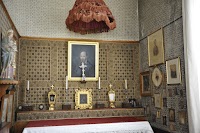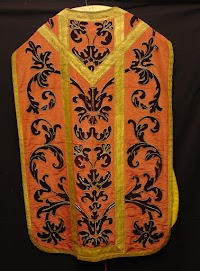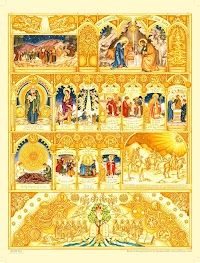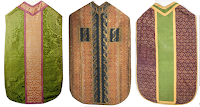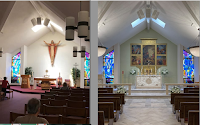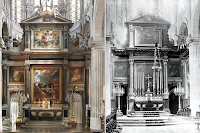 Deo Optimo Maximo; to God, most good, most great. It is a formulation seen time and time again -- usually expressed in the abbreviation D • O • M . Something similar, invocation wise, was seen in the days of the Roman empire, expressed then as D • M, dis manibus , in relat…
Deo Optimo Maximo; to God, most good, most great. It is a formulation seen time and time again -- usually expressed in the abbreviation D • O • M . Something similar, invocation wise, was seen in the days of the Roman empire, expressed then as D • M, dis manibus , in relat…
Our Advertising Partners
-
The global pandemic has disrupted the normal celebration of the Holy Week in Spain, where, for a second year, the government has forbidden t...
-
To the person who simply enjoys beautiful art and architecture, distinctions like "baroque" or "rococo" might seem overl...
-
We live in a very visual, image-based culture and, what's more, there is always lots of curiosity around the matter of traditional papal...
-
The earliest pictorial representations of the Baptism of the Lord were carved in stone, on Christian sarcophagi. Later, during the long Mid...
-
The mitre is one of the most recognizable symbols of prelates of the Church, specifically of bishops up to the Roman pontiff himself -- thou...
-
In a previous article we considered what the exterior of Old St. Peter's was like and today we will turn our attention to the interio...
Blog Archive
-
▼
2021
(258)
-
▼
October
(21)
- A Collection of Sepulchral Monuments
- Restorations in St. John Henry Newman's Private Ch...
- Gothic Splendour in the Rockies: Progress Report o...
- Vesting the Church: Venetian Velvets for Festal Ch...
- Before and After: St. Joseph's in Bowling Green, K...
- Scenes of Martyrdom from Ecclesiae Militantis Triu...
- A Brief Inquiry into Orange Shades in Vestments
- Book Notice: English Medieval Embroidery - Opus An...
- Madonnas and Saints in the Cuzqueño Style of the S...
- The Ángel Arcabucero of Colonial Latin America
- Illustrated Liturgical Year Calendar for Children
- Atypical Colour Combinations Seen in Historical Ve...
- A Spectacular Sixteenth Century Chasuble from Trent
- Before and After: St. Joseph's Chapel at St. Domin...
- Thirteen Ideas for Restoring the Catholic Roots of...
- The Duomo di Sassari: Cattedrale di San Nicola
- Notes on the Liturgical Ornaments of the Cistercia...
- Another Case Study in the Influence of Candles and...
- On the Impressive Ceremonies of the Latin Mass (Us...
- The Novelty of the "Ecclesiastical Textile"
- Announcing: New TAN Books Blog "TAN Direction"
-
▼
October
(21)
Donate
Copyright ©
Liturgical Arts Journal | Powered by Blogger












